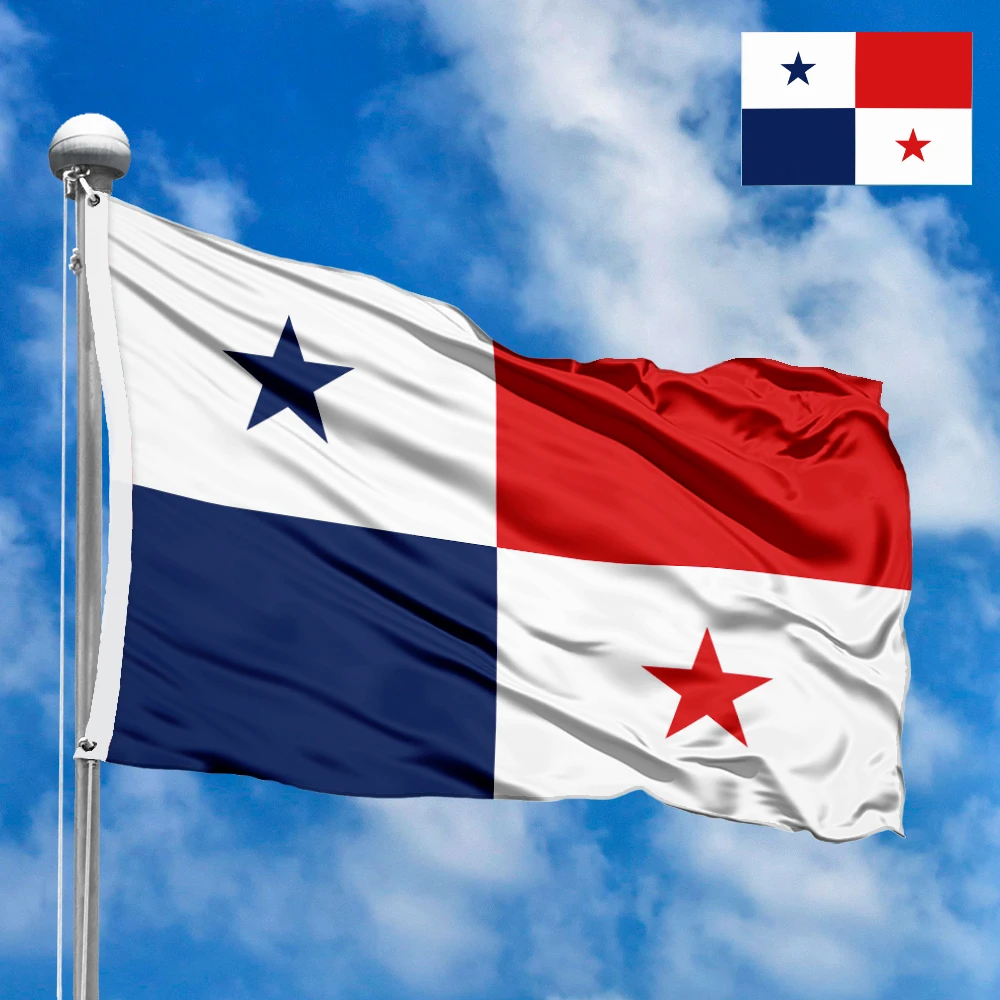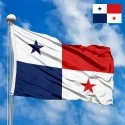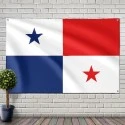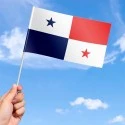The national flag of Panama is more than just a symbol; it is a profound representation of the nation's history, political unity, and foundational values. Its design, with its simple yet powerful geometric layout and a carefully chosen color palette, tells a story of a country born out of a desire for sovereignty and independence. The flag stands as a testament to the nation’s enduring spirit, symbolizing the harmony and progress that its people strive for.
A Detailed Look at the Flag's Design and Symbolism
The flag of Panama is a square divided into four equal quarters. Each quarter holds a specific color or symbol, arranged in a way that creates a striking visual balance. The layout is as follows:
-
The top hoist-side (left) quarter is white and contains a blue five-pointed star.
-
The top fly-side (right) quarter is solid red.
-
The bottom hoist-side (left) quarter is solid blue.
-
The bottom fly-side (right) quarter is white and contains a red five-pointed star.
Each of these elements is imbued with deep symbolic meaning:
-
White: The color white represents peace and purity. Its presence in two of the flag's quadrants symbolizes the hope that the country's political factions can live in harmony without bloodshed. The white fields serve as a visual promise of a peaceful, prosperous future.
-
Blue: The blue color in the bottom hoist-side quadrant and the blue star represent the Panamanian Conservative Party during the early days of the republic's formation. This color also symbolizes the clear and tranquil waters of the Pacific and Atlantic Oceans that flank the Panama Canal, the nation's most vital asset.
-
Red: The red color in the top fly-side quadrant and the red star represent the Panamanian Liberal Party. This color embodies the sacrifice and courage of the Panamanian people who fought for their country's independence. It is a tribute to the patriots who gave their lives for the cause of freedom.
-
The Stars: The two stars are perhaps the most crucial elements of the flag's symbolism. The blue star represents civic virtues and the purity of the country's social life. It stands for honesty, justice, and the desire for peace. The red star, on the other hand, symbolizes authority and law, representing the commitment to a stable and orderly government. Together, the two stars signify the unity of the two great political parties in the task of building a new republic. They are a reminder that a nation's success depends on the collaboration and shared vision of its people, transcending political divides.
Dimensions and Proportions
The official dimensions of the Panamanian flag are a perfect square, giving it a unique appearance among most national flags, which typically have a rectangular shape. The flag's 2:3 ratio is also commonly used in practice, but the square design is the officially recognized version for specific ceremonial and state uses. The stars are carefully positioned at the center of their respective quadrants, ensuring a balanced and aesthetically pleasing design.
The Genesis and Evolution of the Flag
The story of the Panamanian flag's creation is a key part of the nation's founding narrative. After Panama declared its independence from Colombia on November 3, 1903, the new republic needed a national symbol. A contest was held, and the winning design was created by Manuel Encarnación Amador, the son of the nation's first president. However, the first person to actually sew the flag was María de la Ossa de Amador, Manuel's mother and the first First Lady of Panama, making the flag a powerful symbol of family and national unity.
The first flag was secretly sewn in the family's home and was officially hoisted for the first time on November 4, 1903, the day after independence was declared. This act of raising the flag was a powerful statement of sovereignty, both for the nation and for the world. The design was formally adopted by the National Assembly on December 20, 1903, and was later confirmed by the Constitution of 1904. The flag has remained unchanged ever since, a consistent symbol of the country’s founding principles.
Meaning and Significance for Citizens
For the people of Panama, the flag is a potent source of national pride and a constant reminder of their hard-won independence. The flag is a central feature of all national celebrations, especially on Independence Day (November 3rd) and Flag Day (November 4th). It represents the nation's sovereignty, its status as a free and self-governing entity, and its unique geographical importance in world trade and politics.
The flag's symbolism resonates deeply with citizens, reminding them of the need for political harmony and the shared responsibility of building a strong country. The blue and red colors, representing the two major political factions, serve as a reminder that political differences must be set aside for the greater good of the nation. The stars, symbolizing law and civic virtue, provide a moral compass for the people, encouraging them to be active and responsible citizens. For Panamanians living abroad, the flag is a vital link to their heritage, a source of identity, and a rallying point for their community.
Interesting Facts
-
The first proposed flag for Panama, designed by French engineer Philippe-Jean Bunau-Varilla, was rejected. It was based on the flag of the United States, but with yellow stripes instead of red, and with two suns connected by a yellow stripe. The Panamanian people found this design too derivative and chose a more original one.
-
The flag's creation story is closely tied to the Amador family, making it a very personal and intimate symbol for the nation's founders. The fact that the first flag was sewn by a woman, María de la Ossa de Amador, is a point of national pride, highlighting the role of women in the nation's birth.
-
The flag's design is officially described as a "quarterly" arrangement, a term from heraldry, which emphasizes the flag's formal and historical significance.
-
The Panamanian flag's colors have a powerful visual impact. The bold red and blue, combined with the clean white, stand out and make the flag easily recognizable.
-
Although a square shape is the official design, it's not unusual to see a rectangular version (2:3) in everyday use. The square design is primarily reserved for government buildings, military use, and formal ceremonies.
In summary, the flag of Panama is a masterful blend of simple aesthetics and profound meaning. Its design tells a story of political reconciliation, national sovereignty, and the enduring values of peace, liberty, and unity. It is a powerful emblem that continues to inspire pride and patriotism in the hearts of all Panamanians.
In the demonstration images, full-size flags are shown with proportions of 2:3, and hand-held flags with proportions of 1:2.










 Waving flag
Waving flag
 Sizes:
Sizes:
 Round flag
Round flag
 Sizes:
Sizes:
 Rectangular flag 2:3
Rectangular flag 2:3
 Sizes:
Sizes: